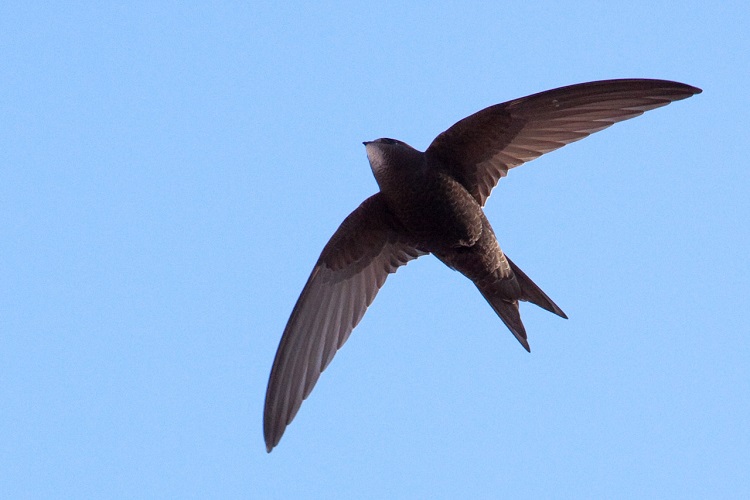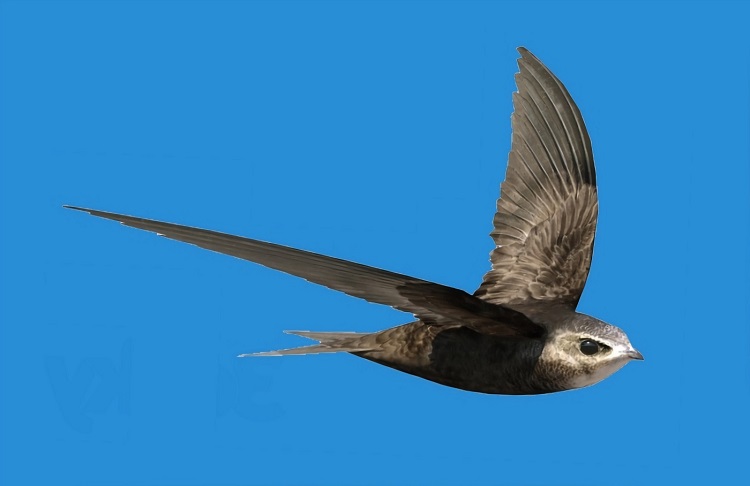
The swift is a medium-sized aerial bird, which is a superb flyer. Sleeping, eating, bathing and even mating on the wing, swifts rarely touch the ground. They are also the fastest birds in level flight, with an impressive top speed of 69mph.
Swifts have a white throat and are a simple sooty brown color, but when they are flying against the sky, they appear black. They have a short, forked tail and long, scythe-like wings. Swifts breed all over the UK during the summer, but they are most common in the south and east. Swifts migrate 3,400 miles twice a year to spend the winter in Africa, pausing along the way in countries like Portugal and France to recharge.
Swifts only have one thought on their minds after a long voyage home from their summer in Africa: mating. Swifts stay together for life and build a little nest at the same location every year before laying and incubating their eggs. They enjoy squeezing through narrow spaces to nest inside roofs of homes and churches. Swift nest places, however, are rapidly vanishing as more historic structures are repaired and soffit gaps are filled.
| Size | Around 16-17cm |
|---|---|
| Weight | Around 40g |
| Breeding season | May-July |
| Lifespan | Up to 20 years |
| Habitat | Anywhere with flying insects |
| Food preferences | Any kind of flying insect |
| Threats | Loss of nesting places and food sources |
